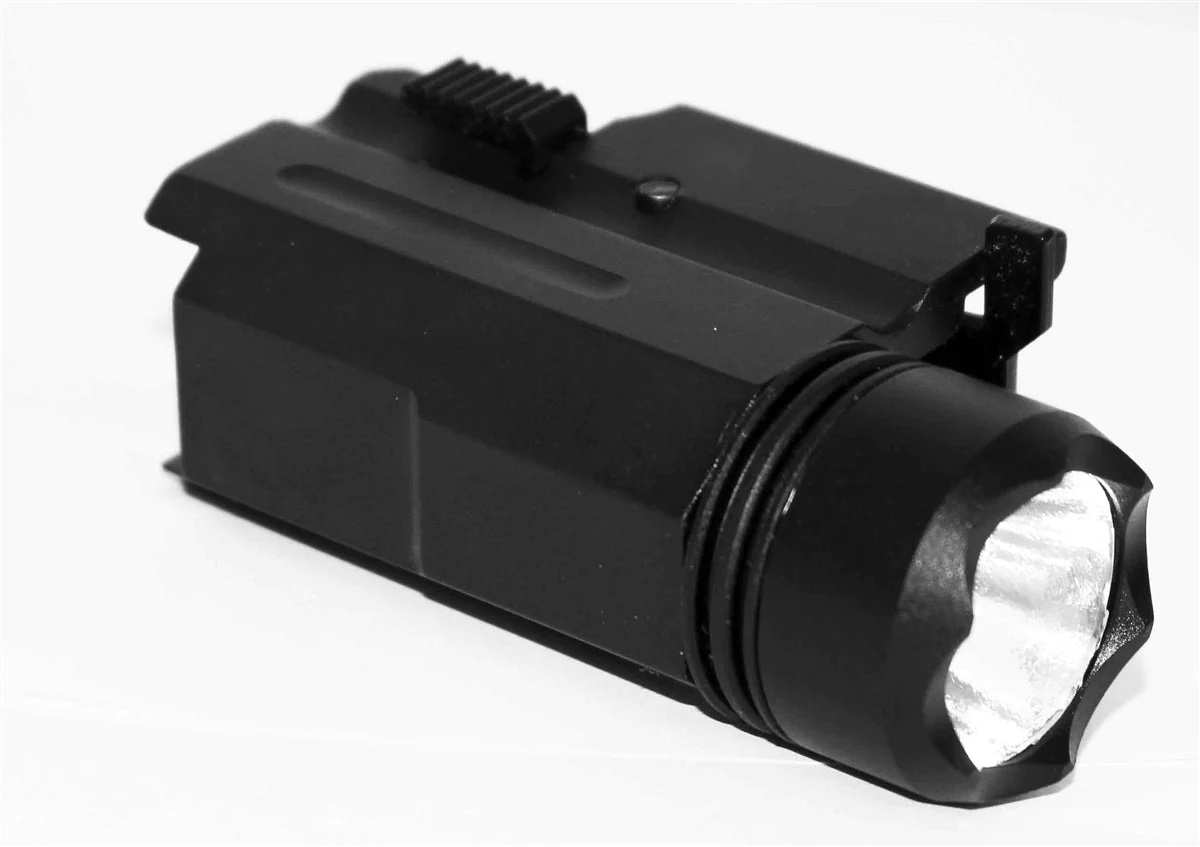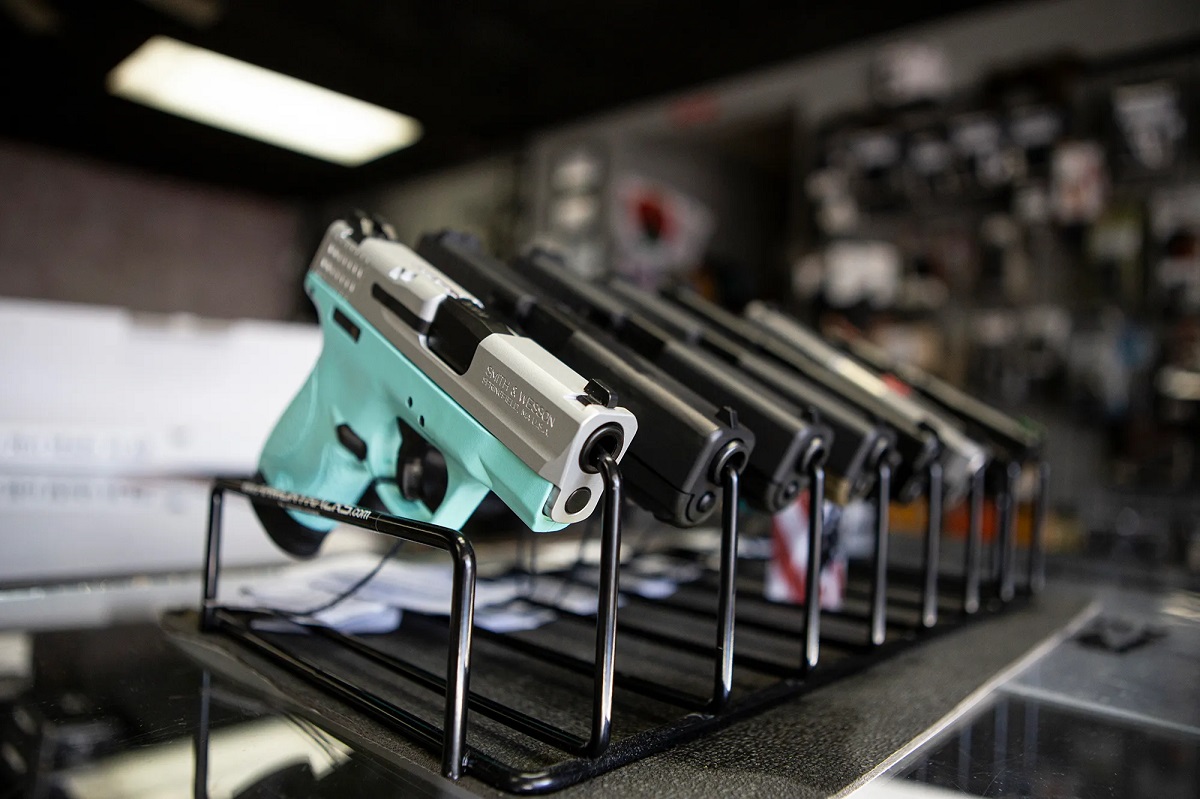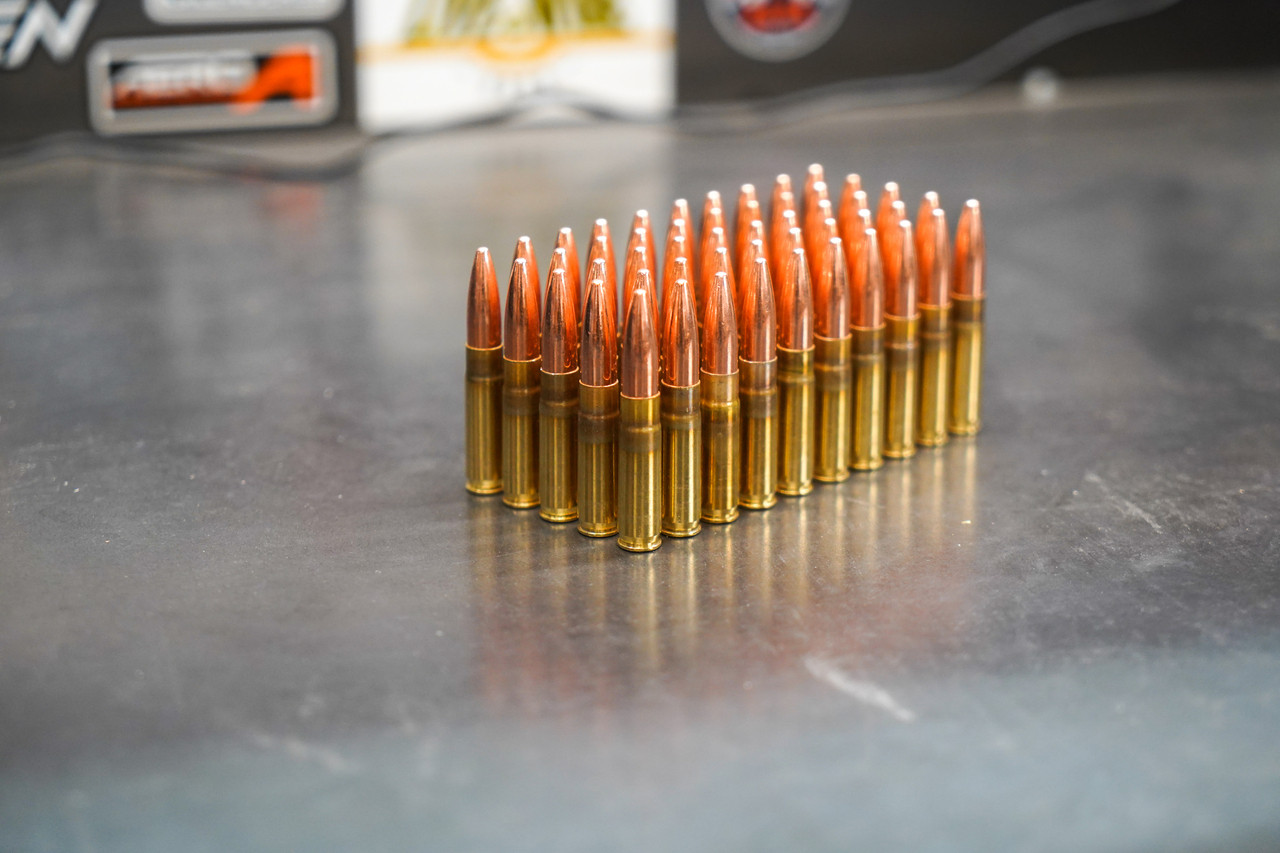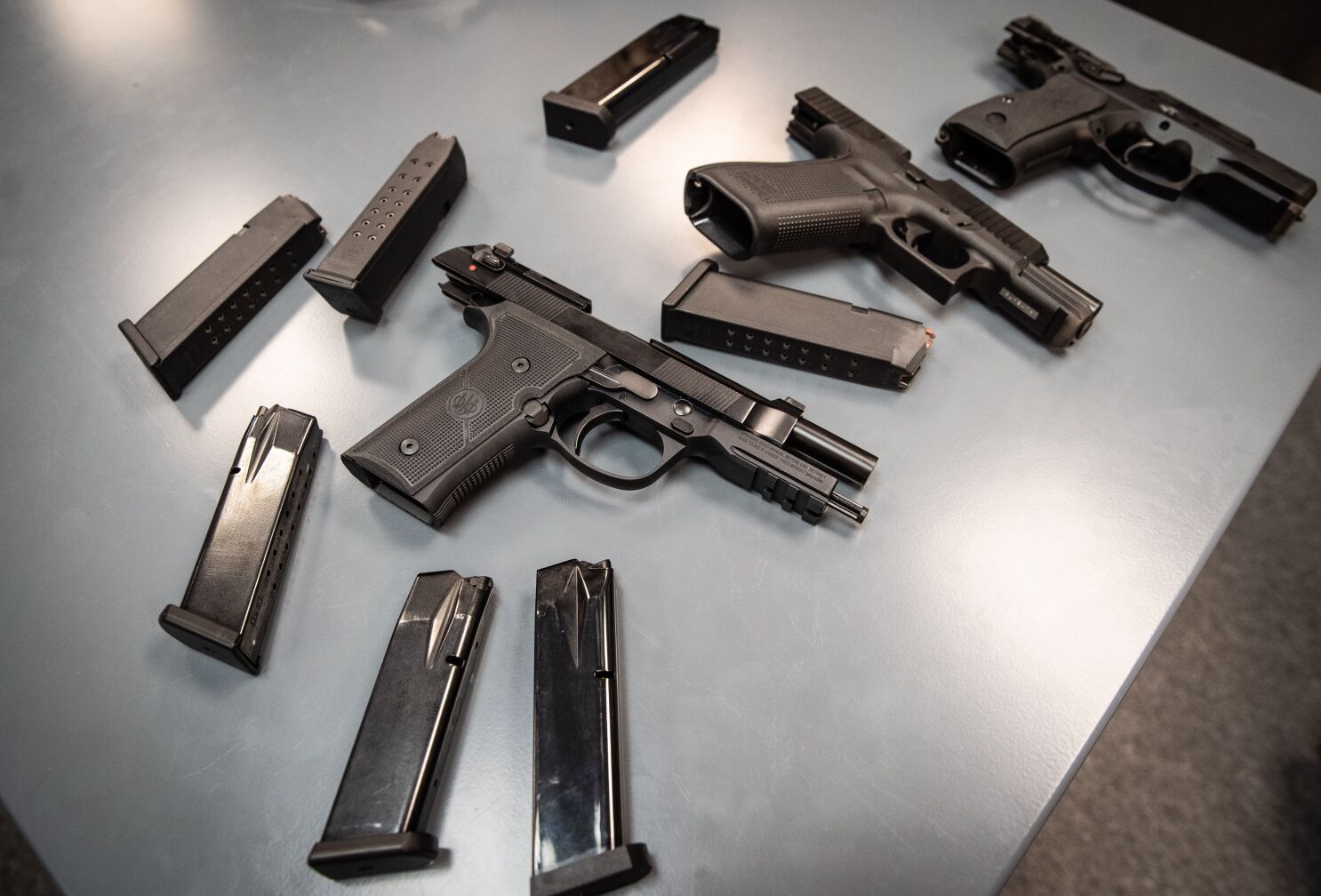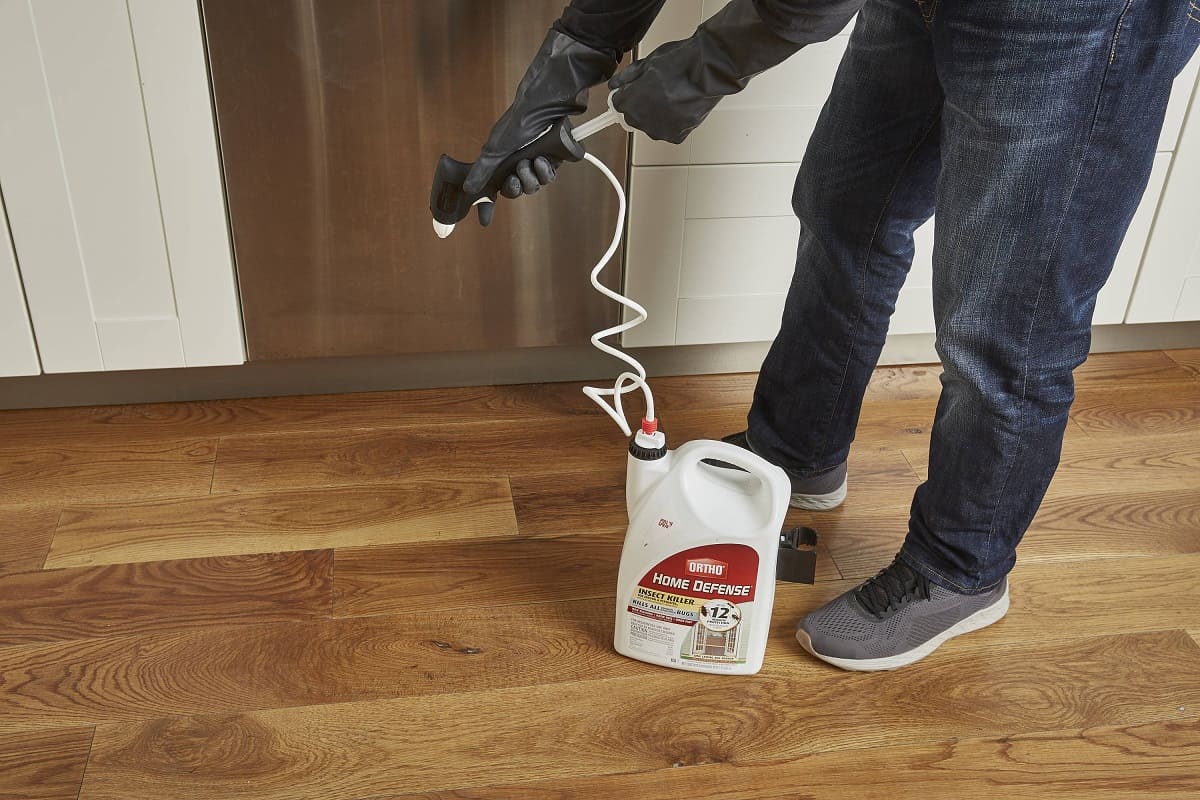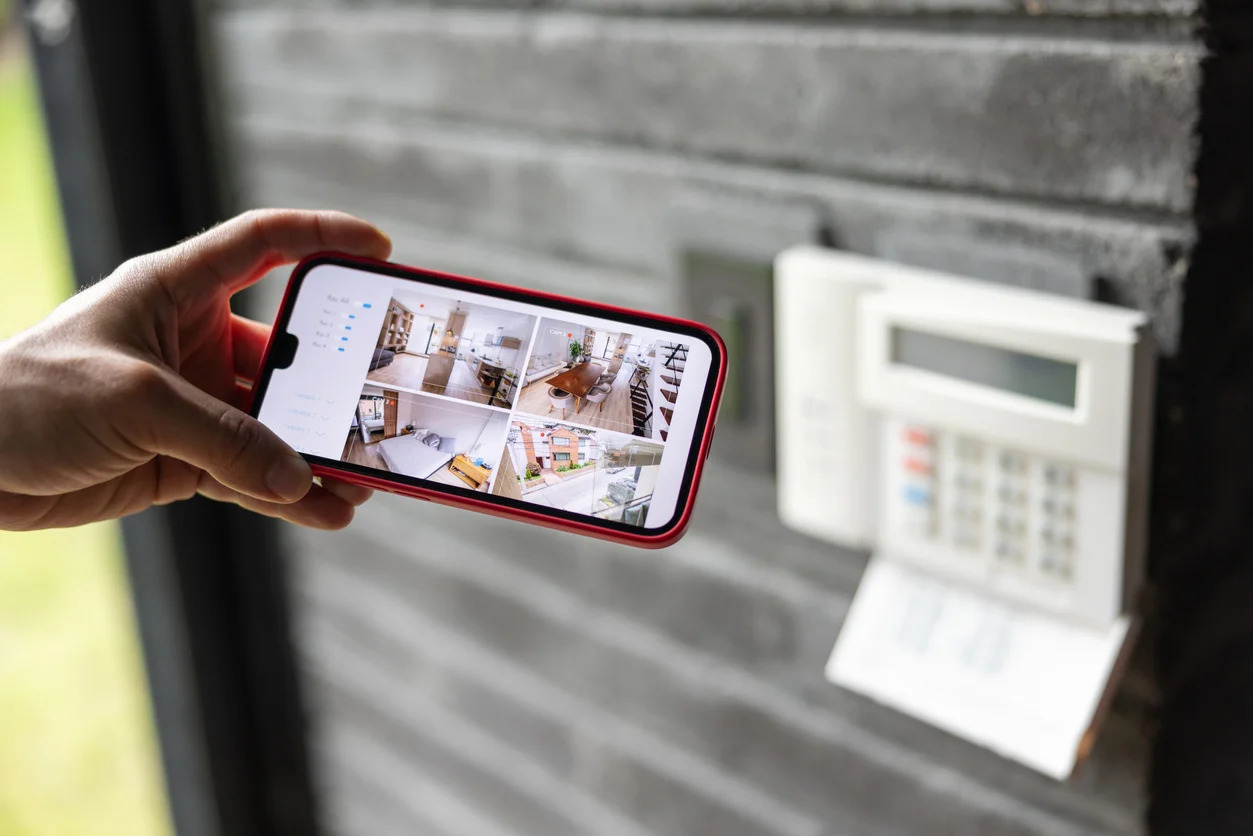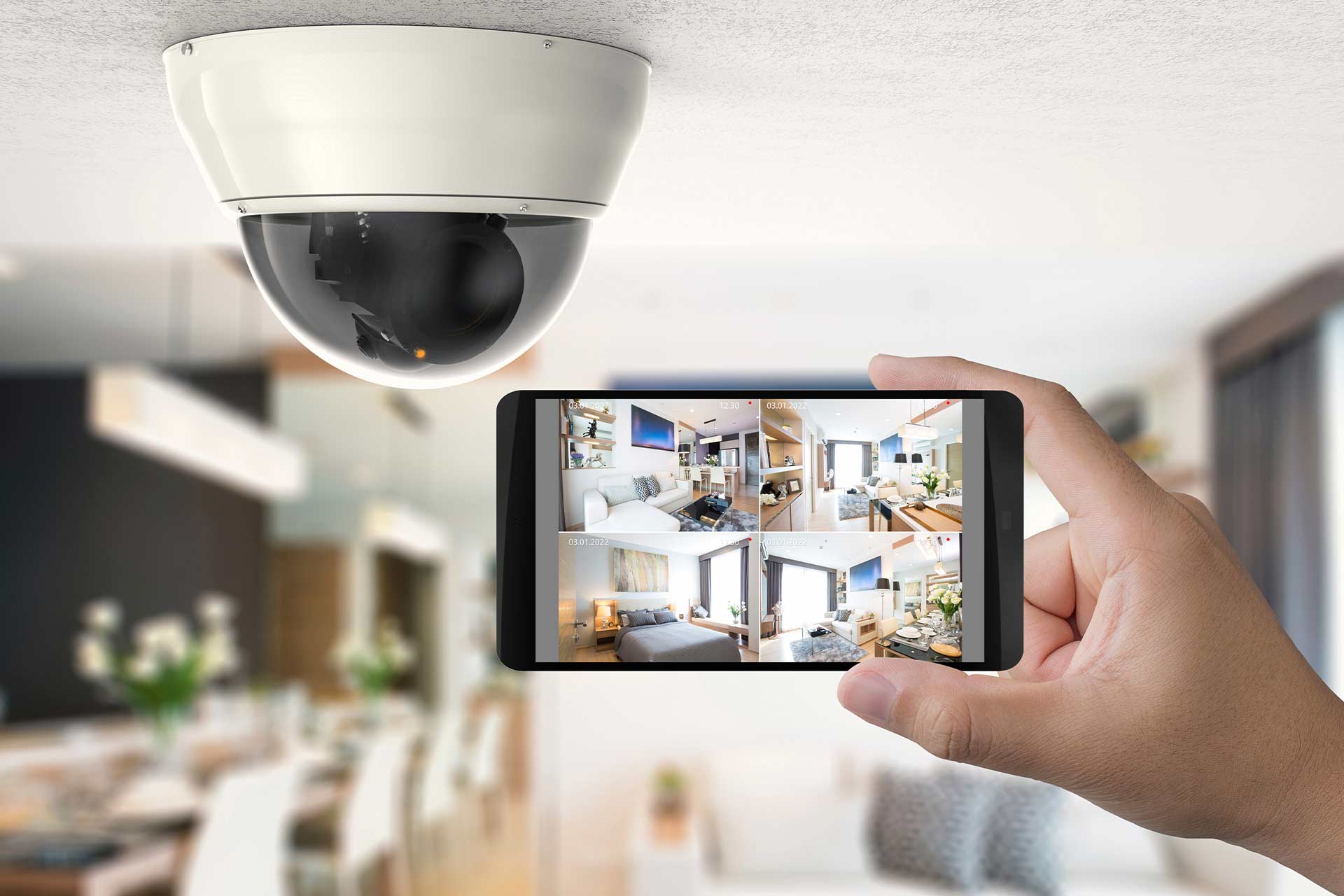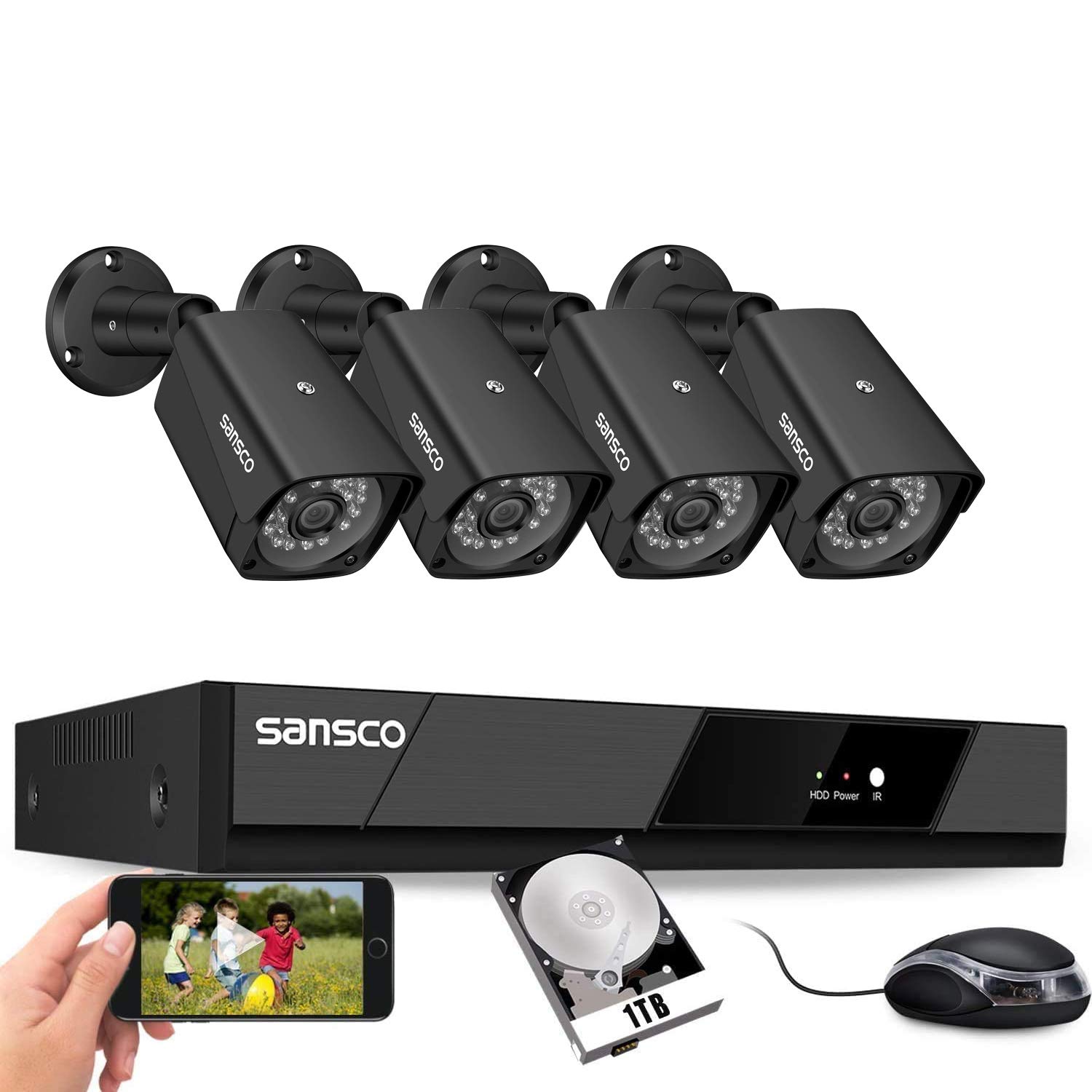Home>Home Security and Surveillance>How Many Rounds Are Needed For Home Defense
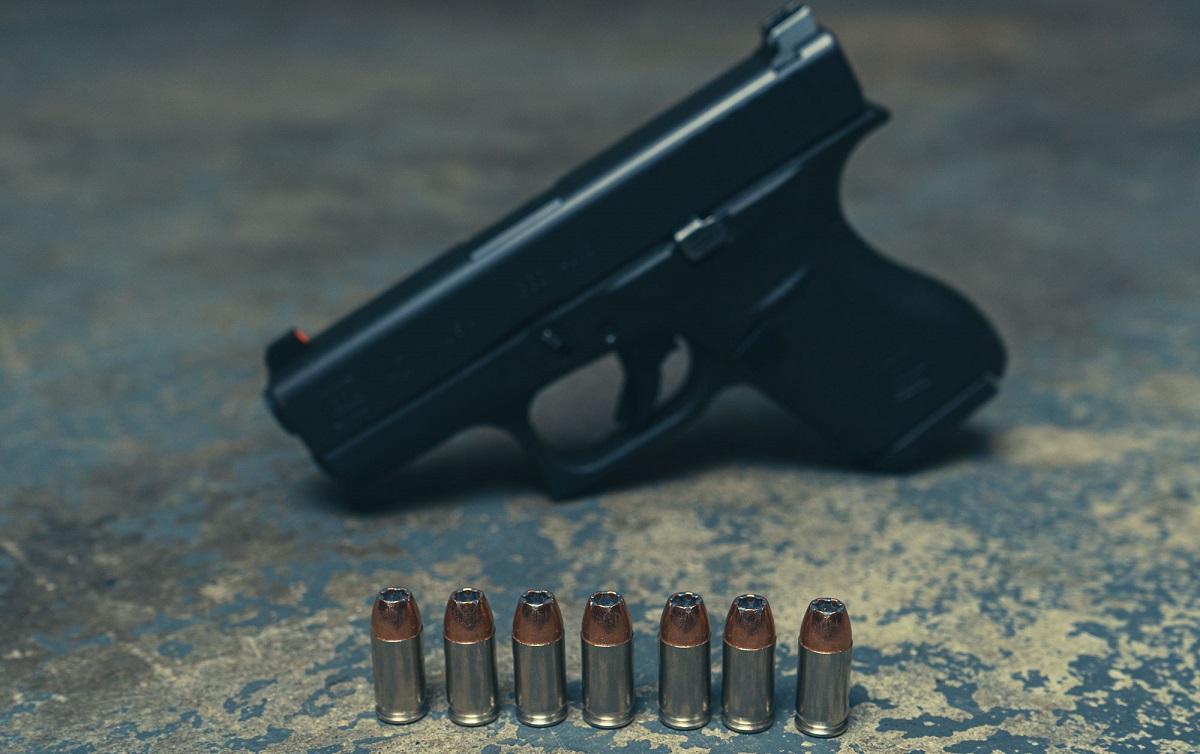

Home Security and Surveillance
How Many Rounds Are Needed For Home Defense
Modified: March 6, 2024
Enhance your home security and surveillance with our guide on how many rounds are needed for effective home defense. Discover expert tips and strategies to keep your loved ones safe.
(Many of the links in this article redirect to a specific reviewed product. Your purchase of these products through affiliate links helps to generate commission for Storables.com, at no extra cost. Learn more)
Introduction
Welcome to the world of home security and surveillance. In an ever-changing and sometimes turbulent world, ensuring the safety of our homes and loved ones is a top priority. That’s why investing in a comprehensive home security system and surveillance setup is crucial.
In this comprehensive guide, we will explore the different aspects of home security and surveillance, providing you with the knowledge and insights you need to make informed decisions. From understanding the types of threats you may encounter to selecting the right equipment and optimizing your system for maximum protection, we’ve got you covered.
Home security and surveillance systems have come a long way in recent years. From basic alarm systems to sophisticated smart home setups, there are now a wide variety of options to choose from. But with so many choices available, it’s essential to understand which features and technologies are most important for your specific needs.
Throughout this guide, we will delve into various factors to consider when selecting a home security system. We’ll explore the different types of threats you may face, such as burglary, vandalism, and even natural disasters. By understanding these threats, you can tailor your security system to provide optimal protection.
One of the fundamental elements of a home security system is surveillance. Being able to monitor your property in real-time and review footage when necessary gives you peace of mind. We’ll discuss the different types of surveillance cameras available and their pros and cons, helping you choose the right ones for your home.
In addition to selecting the right equipment, we’ll also cover essential considerations to optimize your home security system. This includes proper camera placement, effective lighting, and integration with other smart devices in your home. By implementing these strategies, you can enhance the effectiveness of your system and deter potential intruders.
Another critical aspect of home security and surveillance is connectivity and remote access. Most modern systems allow you to monitor your property and control various features from anywhere with an internet connection. We’ll explore the benefits of remote access and guide you on how to set it up securely.
Lastly, we’ll touch on the importance of ongoing maintenance and system updates. Just like any other technological device, your home security system requires regular care and attention to ensure it continues to function optimally. We’ll provide you with useful tips and best practices to keep your system running smoothly.
So, whether you’re a complete newbie to home security and surveillance or looking to upgrade your existing setup, this guide is here to help. Together, let’s create a safe and secure environment for you and your loved ones.
Key Takeaways:
- Protecting your home involves understanding potential threats, securing entry points, and maintaining your security system. Tailor your defense strategy to your specific needs, location, and family dynamics for optimal protection.
- Training, skill development, and ongoing maintenance are crucial for effective home defense. Stay informed, practice emergency drills, and prioritize safety to create a safe environment for your family.
Read more: What Are Home Defense Rounds
Understanding Home Defense
When it comes to protecting your home and ensuring the safety of your family, having a solid understanding of home defense is crucial. Home defense refers to the measures and strategies individuals take to safeguard their homes from potential threats such as break-ins, burglaries, and other criminal activities.
First and foremost, it’s important to acknowledge that home defense goes beyond simply locking your doors and installing a basic alarm system. While these measures are a good start, a comprehensive home defense strategy involves a multi-layered approach, combining various security measures to create a robust and effective defense system.
A key component of home defense is conducting a thorough assessment of your home’s vulnerabilities. This involves identifying and addressing weak points that could potentially be exploited by intruders. Areas to consider include doors and windows, as well as potential hiding spots around your property.
Investing in high-quality locks for your doors and windows is essential. Deadbolt locks and reinforced strike plates can significantly increase the security of your home. Additionally, installing window security film or laminated glass can add an extra layer of protection against forced entry.
Another aspect of home defense is the utilization of technology. Today, there is a wide range of advanced security systems available, including burglar alarms, surveillance cameras, and smart home automation. These systems provide real-time monitoring, remote access, and even integration with other smart devices in your home, enhancing the overall security of your property.
When it comes to home defense, it’s important to consider the potential threats you may face. This can vary depending on factors such as your location, the crime rate in your area, and even your personal circumstances. Understanding the threats can help you tailor your defense strategy to mitigate risks effectively.
For example, if you live in an area with a higher incidence of burglaries, investing in a comprehensive security system with surveillance cameras and alarm systems may be a priority. On the other hand, if you live in an area prone to natural disasters, such as hurricanes or wildfires, you may want to focus on measures like reinforced windows and an evacuation plan.
In addition to technology and physical security measures, personal preparedness plays a crucial role in home defense. This includes having a well-rehearsed emergency plan for your family, knowing how to react in dangerous situations, and having essential supplies readily available.
Understanding home defense is a continuous process that requires constant evaluation and adjustment. Regularly reassessing your security measures and staying up-to-date with advancements in home security technology is essential to ensure your defense strategy remains effective.
By taking a comprehensive and multi-layered approach to home defense, you can create a safe and secure environment for you and your loved ones. Remember, it’s better to be proactive and prepared than to react after an incident has occurred. Stay vigilant and invest in the security of your home and peace of mind.
Factors to Consider
When it comes to home security and surveillance, there are several factors to consider to ensure you make the right decisions for your specific needs. By taking these factors into account, you can create a comprehensive and effective defense strategy for your home.
1. Location: The location of your home plays a significant role in determining the level of security required. Factors such as crime rates in the area, proximity to emergency services, and the neighborhood’s overall safety should be considered. Understanding the specific challenges your location presents will help you tailor your security measures accordingly.
2. Budget: Your budget will influence the types of security systems and equipment you can afford. It’s essential to establish a realistic budget and prioritize the most critical aspects of your home security. Remember, even with a limited budget, there are still affordable options available that can provide a significant level of protection.
3. Home Size and Layout: The size and layout of your home will impact the number and placement of security devices you need. For larger homes, multiple cameras and sensors may be required to adequately cover all areas. Understanding your home’s layout will help you determine the optimal locations for devices and identify any potential blind spots.
4. Family Dynamic: The composition and lifestyle of your family should be taken into account when designing your security system. Factors such as the number of family members, their ages, and any specific vulnerabilities will influence the type of security measures you need. For example, families with young children may consider additional safety features such as childproof locks and monitored smoke detectors.
5. Pets: If you have pets in your home, it’s important to consider their needs and how they may interact with the security system. Some alarm systems have pet-immune sensors, which can prevent false alarms triggered by smaller animals. Additionally, you may want to consider indoor surveillance cameras to keep an eye on your pets when you’re away.
6. Lifestyle: Your lifestyle and daily routine will also impact your home security decisions. Factors such as the amount of time spent away from home, travel frequency, and work schedules will determine the level of monitoring and automation required. Smart home security systems offer convenient features like remote access and automation that can accommodate various lifestyles.
7. Privacy: Consider your privacy concerns when selecting surveillance equipment. If you have neighbors in close proximity, you may want to choose cameras with privacy features to protect both your own privacy and that of your neighbors.
8. Legal Restrictions: Familiarize yourself with any legal restrictions or regulations regarding home security and surveillance in your area. Certain jurisdictions may have limitations on the use of certain technologies or recording practices. It’s essential to ensure that your security measures comply with the local laws and regulations.
By considering these factors, you can make informed decisions about the type of security systems and equipment that will best meet your needs. Remember, no two homes are the same, so it’s essential to tailor your security measures to your specific circumstances for optimal protection.
Evaluating Potential Threats
When it comes to home security and surveillance, it’s crucial to evaluate and understand the potential threats you may face. By identifying these threats, you can develop a targeted defense strategy to mitigate risks effectively. Here are some common threats to consider:
1. Burglary: Burglaries are one of the most common threats to homes. Assess the vulnerability of your home to break-ins by examining entry points such as doors and windows. Look for weak spots that could be exploited by potential intruders.
2. Vandalism: Properties may also be at risk of vandalism, which can include graffiti, property damage, and destruction of personal belongings. Consider measures such as security cameras and proper lighting to deter vandals.
3. Natural Disasters: Depending on your location, you may face the risk of natural disasters such as hurricanes, earthquakes, wildfires, or floods. Evaluate the potential impact of these events on your home and take appropriate measures such as reinforced windows, secure outdoor structures, and an emergency evacuation plan.
4. Home Invasion: Home invasions involve criminals forcibly entering a residence while occupants are present. Assess the vulnerability of your home and take precautions such as installing sturdy doors with reliable locks and an alarm system to deter potential home invaders.
5. Fire: Fires are a significant threat to homes. Ensure that your home has functioning smoke detectors, fire extinguishers, and an evacuation plan in place. Consider integrating fire detection and suppression systems into your home security system for immediate response and increased safety.
6. Medical Emergencies: While not typically considered a security threat, medical emergencies can occur within the home. Evaluate the need for medical alert systems or wearable devices that can alert medical professionals or loved ones in case of an emergency.
7. Cybersecurity: With the advent of smart home technology, cybersecurity threats have become increasingly prevalent. Protect your home network and connected devices by using secure passwords, regularly updating firmware, and implementing network security features.
8. Identity Theft: Identity theft can occur both online and offline. Safeguard your personal information by shredding sensitive documents and using secure online practices. Be cautious when sharing personal information and regularly monitor your financial accounts for any signs of suspicious activity.
By evaluating these potential threats, you can prioritize your security measures and invest in the right equipment to address the specific risks you face. Remember, it’s essential to regularly reassess and update your defense strategy to adapt to changing circumstances and emerging threats.
Firearms for Home Defense
When considering home defense, firearms often come to mind as a potential means of protection. While firearms can be a valuable tool in certain situations, it’s essential to approach their use with caution and responsibility. Let’s explore the topic of firearms for home defense:
First and foremost, it’s important to note that firearm ownership and use are subject to local laws and regulations. Familiarize yourself with these laws to ensure legal compliance and responsible ownership.
Firearms can provide a level of protection and deterrence, but they require proper training and responsible handling. If you choose to own a firearm for home defense, it’s crucial to receive comprehensive training in firearm safety, operation, and self-defense laws.
When selecting a firearm for home defense, several factors should be considered:
1. Firearm Type: There are various types of firearms suitable for home defense, including handguns, shotguns, and rifles. Each has its own advantages and considerations. Handguns are compact and easy to maneuver, while shotguns are known for their stopping power. Rifles may provide longer-range capabilities.
2. Size and Maneuverability: Consider the size and maneuverability of the firearm. Home defense firearms should be easy to handle and maneuver in tight spaces, such as hallways or rooms, without compromising safety.
3. Ammunition: The type of ammunition used in a home defense firearm is an important consideration. Hollow point or frangible ammunition is often recommended as it is designed to expand upon impact, reducing potential over-penetration and minimizing the risk of harm to innocent bystanders.
4. Reliability and Functionality: Reliability is crucial in a home defense firearm. Choose a reputable brand known for reliability and durability. Regular maintenance and proper storage are also essential to ensure the firearm functions when needed.
5. Access and Storage: It’s imperative to store firearms securely to prevent unauthorized access, especially if there are children in the home. Invest in a sturdy gun safe or lockbox to ensure proper storage.
6. Consider Non-Lethal Options: Firearms should not be the only option considered for home defense. Non-lethal alternatives, such as pepper spray or Tasers, can be effective tools to deter or incapacitate intruders while minimizing the risk of severe injury or death.
Ultimately, the decision to own a firearm for home defense is a personal one. It requires careful consideration of legal obligations, responsible ownership, and a commitment to ongoing training and practice. Additionally, it’s important to have a comprehensive home defense plan that includes other security measures, such as alarms, surveillance systems, and proper lighting.
Remember, firearms should always be seen as a last resort in a home defense situation. The primary goal should be to protect yourself and your loved ones while minimizing the risk of harm to innocent parties. Seek professional guidance and training to ensure you are prepared to handle a firearm safely and responsibly.
Choosing the Right Firearm
Choosing the right firearm for home defense requires careful consideration of several factors. It’s essential to select a firearm that fits your needs, comfort level, and ability to handle it safely. Here are some important factors to consider when choosing the right firearm for your home defense needs:
1. Comfort and Fit: The firearm should feel comfortable in your hand and be easy for you to control. Consider factors such as grip size, weight, and overall ergonomics. Visit a reputable firearm dealer and try different models to find one that feels natural and comfortable for you.
2. Recoil Control: Recoil, or the backward movement of the firearm when fired, can vary depending on the caliber and design of the firearm. It’s important to choose a firearm that allows you to manage recoil comfortably. A firearm with excessive recoil may affect your accuracy and overall control.
3. Ammunition Capacity: Consider the ammunition capacity of the firearm. Higher capacity firearms, such as semi-automatic pistols or shotguns with extended magazines, can provide more rounds before reloading. However, it’s important to ensure you can handle and control the recoil and manage the higher capacity responsibly.
4. Caliber: The caliber of the firearm refers to the internal diameter of the barrel. Different calibers have different levels of stopping power and recoil. It’s important to choose a caliber that strikes a balance between effective stopping power and controllable recoil. Common calibers for home defense include 9mm, .40 S&W, and .45 ACP for handguns, and 12-gauge for shotguns.
5. Reliability and Durability: Choose a firearm known for its reliability and durability. Look for reputable brands with a track record of manufacturing firearms that function consistently and can withstand extended use. Consider researching reviews and seeking recommendations from knowledgeable sources.
6. Training and Practice: Ensure that proper training and ongoing practice are part of your firearm ownership journey. Even the best firearm is only as effective as the person wielding it. Seek professional training to become proficient in firearm safety, marksmanship, and defensive shooting techniques.
7. Laws and Regulations: Familiarize yourself with local laws and regulations regarding firearm ownership, storage, and self-defense. It’s important to understand and comply with all legal obligations to ensure a responsible and legal firearm ownership experience.
8. Consider Professional Advice: If you are new to firearms or unsure about the selection process, consider seeking advice from professionals, such as firearms instructors or experienced shooters. Their expertise can guide you in choosing the right firearm for your specific needs and abilities.
Remember, owning a firearm for home defense is a serious responsibility. It requires proper training, ongoing practice, and a commitment to safe and responsible firearm ownership. It’s also important to include other security measures, such as alarms, surveillance systems, and proper lighting, as part of your overall home defense strategy.
Take the time to thoroughly research and educate yourself before making a decision. Understanding your specific needs, comfort level, and legal obligations will help ensure that you select the right firearm for your home defense needs.
Considering Ammunition TypesWhen it comes to selecting ammunition for your home defense firearm, it’s important to choose the right type that balances effectiveness, stopping power, and safety. Various ammunition types are available, each with its own characteristics and intended use. Here are some key factors to consider when considering ammunition types for home defense:
1. Hollow Point: Hollow point ammunition is a popular choice for home defense. These bullets are designed to expand upon impact, creating a larger wound channel and transferring more energy to the target. This expansion helps to reduce the risk of over-penetration, which is especially crucial when considering the safety of loved ones and bystanders.
2. Frangible: Frangible ammunition is designed to disintegrate upon impact, often into small fragments. This type of ammunition is less likely to pass through walls or objects, reducing the risk of injury to innocent persons in nearby rooms or neighboring properties.
3. Standard FMJ: Full Metal Jacket (FMJ) ammunition features a soft lead core encased in a harder metal shell. It is known for its reliability, affordability, and penetration capabilities. However, FMJ rounds have a higher risk of over-penetration, which can increase the likelihood of unintended damage or harm.
4. Shotgun Shells: Shotguns are a common choice for home defense due to their versatility and close-quarter effectiveness. Shotgun ammunition typically consists of pellets, also known as birdshot, buckshot, or slugs. Birdshot can be an effective option to minimize over-penetration, while buckshot and slugs offer more stopping power.
5. Consider Local Regulations: Before purchasing ammunition, it’s crucial to familiarize yourself with local laws and regulations. Some areas have restrictions on specific ammunition types or magazine capacities. Additionally, certain geographic regions may have limitations on the use of shotgun ammunition, such as within densely populated areas.
Once you have made a decision on the type of ammunition, it’s important to regularly practice with it to become familiar with its performance and recoil. Understanding how the ammunition behaves during firing can help you achieve greater accuracy and control in high-stress situations.
It’s worth noting that the effectiveness of any ammunition is highly dependent on shot placement. Even the most advanced ammunition won’t be effective if shots are not accurately aimed at vital areas of an assailant’s body. Regular firearms training and practice are essential for improving accuracy and shot placement.
Lastly, ensure that you purchase ammunition from reputable manufacturers. Quality control and consistency are crucial when it comes to ammunition performance and reliability. Research and consult trusted sources to find brands that are known for producing reliable, high-quality ammunition.
Choosing the right ammunition type for your home defense firearm is an important decision that requires consideration of factors such as over-penetration risks, effectiveness, and local regulations. By selecting the appropriate ammunition and regularly practicing with it, you can responsibly and effectively prepare yourself for potential home defense scenarios.
It’s recommended to have at least 50 rounds of ammunition for home defense. This allows for practice, potential multiple threats, and ensures you have enough in case of an extended situation.
How Many Rounds Are Necessary
One of the common questions that arises when considering home defense is how many rounds of ammunition are necessary. The answer to this question depends on several factors, including individual circumstances, potential threats, and personal preferences. Let’s explore these factors to help you determine how many rounds might be appropriate for your home defense needs:
1. Potential Threats: Consider the potential threats you may face and their likelihood in your area. The level of crime, presence of wildlife, and other factors unique to your location can help you gauge the potential risk. Understanding the potential threats can give you an idea of what you might encounter and how many rounds you may need in a worst-case scenario.
2. Number of Potential Intruders: Consider the number of potential intruders you may encounter during a home defense situation. While it’s difficult to predict with certainty, evaluating the layout and size of your home can give you an idea of the areas that may be accessed and the number of potential entry points. This assessment can help guide you on the number of rounds you might need to effectively defend your home.
3. Firearm Capacity: The capacity of your firearm, be it a handgun, shotgun, or rifle, will also impact the number of rounds you have readily available. If you have a firearm with a higher ammunition capacity, such as a semi-automatic pistol with a larger magazine or a shotgun with a tube magazine, you may have more rounds at your disposal before needing to reload.
4. Reload Speed: Consider your reload speed and proficiency. Reloading a firearm during a high-stress situation can be challenging and time-consuming. If you have limited experience with quick and efficient reloads, it may be prudent to have a higher number of rounds readily available to minimize the need for reloading.
5. Training and Skill Level: Your level of training and proficiency in firearm handling should also be taken into account. This includes not only accuracy and marksmanship but also the ability to make quick decisions and effectively engage targets in a high-stress situation. A higher level of training may allow for more efficient use of ammunition, reducing the number of rounds needed.
6. Legal and Practical Considerations: It’s important to consider both legal and practical factors when determining the number of rounds necessary. Evaluate local laws and regulations regarding magazine capacities and any limitations that may impact the amount of ammunition you can have readily available. Additionally, practical considerations such as the weight and mobility of carrying extra ammunition should be taken into account.
Ultimately, the number of rounds necessary for your home defense needs will be a personal decision based on your specific circumstances and preferences. It’s important to strike a balance between having enough rounds to address potential threats and being realistic about your ability to effectively utilize them in a high-stress situation.
It’s also worth noting that an essential aspect of home defense is being prepared and having a well-thought-out plan in place. This includes factors such as early detection, calling emergency services, and having a secure area to retreat to if necessary. By focusing on these aspects, you can potentially reduce the number of rounds needed to neutralize a threat.
Ultimately, your goal should be to prioritize accuracy, situational awareness, and the ability to defend yourself and your loved ones effectively, rather than solely relying on the number of rounds available.
Factors That Determine Round Count
When determining the appropriate round count for home defense, several factors come into play. These factors can help guide you in assessing how many rounds you may need to effectively defend your home. Let’s explore some of the key factors:
1. Threat Assessment: Assessing the potential threats you may encounter is a fundamental step in determining the round count. Consider the severity of potential threats and the number of assailants you may face. This evaluation can help you gauge the level of firepower required to neutralize the threat effectively.
2. Firearm Capacity: The capacity of your firearm plays a significant role in determining the round count. Firearms with higher capacity magazines allow for more rounds to be readily available without the need to reload. Consider the capacity of your firearm and factor it into your round count calculation.
3. Defense Plan: Your defense plan should also be taken into consideration. Determine the various stages of your defense plan, including early detection, warning family members, and contacting authorities. Assess how many rounds you may realistically need at each stage to cover potential threats effectively.
4. Recoil Management: Evaluate your ability to manage recoil. In high-stress situations, controlling recoil becomes vital for accurate and effective shooting. Consider the recoil characteristics of your chosen firearm and ammunition and how it may impact your ability to deliver multiple accurate shots.
5. Reload Speed and Proficiency: Consider your reload speed and proficiency in reloading your firearm. During a home defense scenario, the need to reload can arise. Evaluate your skill in efficiently reloading under stress and determine how it may affect your round count calculation.
6. Training and Skill Level: Your training and skill level directly impact the round count needed. Regular training not only enhances accuracy and marksmanship but also ensures you make effective and well-placed shots. The better your training and skill level, the fewer rounds you may need to neutralize a threat.
7. Legal Considerations: It’s crucial to consider legal limitations and regulations regarding round count and magazine capacity in your jurisdiction. Familiarize yourself with local laws to ensure compliance while determining the appropriate round count for your home defense needs.
8. Risk Tolerance: Everyone has a different level of risk tolerance. Some individuals may opt for a higher round count to minimize the risk of running out of ammunition, while others may prioritize carrying fewer rounds to maintain mobility and reduce weight. Your personal risk tolerance should factor into your round count decision.
Ultimately, determining the round count for home defense requires a thoughtful evaluation of these factors. It’s important to strike a balance between having an adequate supply of rounds to address potential threats and being realistic about your ability to effectively utilize them. Remember, training, accuracy, and situational awareness are just as crucial as the number of rounds available.
Regular training and practice are essential for developing the skills necessary to handle a home defense situation effectively. By focusing on these aspects, you can make informed decisions about the round count, ensuring the safety of yourself and your loved ones.
Assessing Your Home’s Layout
Assessing your home’s layout is a crucial step in developing an effective home defense strategy. Understanding the layout and potential vulnerabilities of your property allows you to identify areas that may require additional security measures. Here are some key aspects to consider when assessing your home’s layout:
1. Entry Points: Identify all entry points into your home, including doors, windows, and any other potential access points. Each entry point should be evaluated for its level of security, such as the quality of locks, the durability of materials, and the presence of reinforcement measures.
2. Windows: Windows are particularly vulnerable areas in a home’s layout. Assess each window for its accessibility and security features. Consider reinforcing windows with security film, shatter-resistant glass, or window bars to deter potential intruders.
3. Landscaping: Evaluate the landscaping surrounding your home. Overgrown foliage or trees close to windows and entrances can provide cover for potential intruders. Trim shrubs and plants near windows and ensure good visibility of your property from the street and neighboring homes.
4. Lighting: Adequate lighting is crucial for deterring potential intruders and enhancing overall security. Evaluate the lighting around your property, especially at entry points and dark areas. Install motion-sensor lights, well-placed outdoor lighting, and consider pathway illumination to improve visibility and discourage unwanted activity.
5. Interior Layout: Assess the interior layout of your home. Consider factors such as the location of bedrooms, safe rooms, and escape routes. Identify areas where additional security measures, such as surveillance cameras or alarms, may be needed. Ensure that you have clear and unobstructed pathways that allow for a quick and safe evacuation if necessary.
6. Securing Valuables: Assess how you can secure valuables within your home. Evaluate the need for a safe or lockbox to store important documents, jewelry, firearms, or other valuable items. Consider concealment options for items that may attract unwanted attention.
7. Alarms and Surveillance: Determine the areas where alarms and surveillance systems would be most effective. This may include high-traffic areas, entry points, or rooms where you spend the most time. Placement of security cameras and sensors should provide optimal coverage of vulnerable areas while minimizing blind spots.
8. Coordinating with Neighbors: Assess the proximity and relationship with your neighbors. Establishing good communication and coordination with neighbors can be valuable for overall home security. Consider neighborhood watch programs or sharing information about suspicious activities to enhance collective security.
Through a comprehensive assessment of your home’s layout, you can identify vulnerabilities and take appropriate steps to reinforce security measures. It’s important to strike a balance between physical barriers, technology, and other preventive measures to create a robust defense system that suits your specific needs.
Remember that no home is completely impenetrable, but by being proactive and addressing potential vulnerabilities, you can significantly reduce the risk of intrusion and enhance the safety of your home and loved ones.
Practical Considerations
When it comes to home security and surveillance, there are practical considerations that should be taken into account to ensure the effectiveness and functionality of your defense strategy. These practical considerations encompass various aspects that can enhance the overall security of your home. Here are some key practical considerations to keep in mind:
1. Regular Maintenance: Regular maintenance of your security system is essential to ensure its optimal performance. Keep an eye on camera lenses for any dirt or smudges that may impair their effectiveness. Check batteries in alarms and sensors regularly and replace them as needed. Stay updated with firmware and software updates for any smart devices or security apps you use.
2. Clean and Tidy Outdoor Spaces: Maintaining a clean and tidy outdoor space can have a significant impact on your home’s security. Trim hedges and shrubs near windows and entrances, as overgrown foliage can provide cover for potential intruders. Keep walkways clear and well-lit to deter unwanted activity.
3. Secure Doors and Windows: Reinforce your doors and windows with sturdy locks and strong frames. Ensure that all locks are in good working condition and replace them if necessary. Consider adding additional security measures such as door jammers or window security film to provide an extra layer of protection.
4. Clear Visibility: Maintain clear visibility both inside and outside your home. Ensure that curtains or blinds do not completely obscure the view of entry points from the street, as this can discourage potential intruders. Keep foliage trimmed to allow a clear line of sight from the street and neighboring properties.
5. Secure Wi-Fi Network: Protect your home network by securing your Wi-Fi with a strong password and encryption. Regularly update the firmware of your router and other connected devices to protect against potential vulnerabilities. Consider changing the default network name (SSID) to something unique to minimize the risk of unauthorized access.
6. Communication: Establish clear lines of communication with all members of your household regarding home security procedures and emergency plans. Ensure that everyone knows how to arm and disarm the security system, use panic buttons, and contact emergency services if needed. Regularly review and practice your emergency plan to ensure its effectiveness.
7. Emergency Preparedness: It’s essential to be prepared for emergencies beyond just home security. Have a well-stocked emergency kit readily available with essential supplies such as food, water, first aid items, flashlights, and batteries. Establish a communication plan with family members in case of power outages or other disruptions.
8. Insurance Coverage: Review your home insurance policy to ensure that it adequately covers your home and its contents in the event of a security incident. Understand the specifics of your coverage, including the deductible and any excluded items, to avoid any surprises in case of a claim.
By incorporating these practical considerations into your home security and surveillance strategy, you can enhance the overall effectiveness of your system. It’s important to remember that home security is an ongoing effort that requires attention and maintenance. Regularly reassess and update your security measures to adapt to changing circumstances and emerging technologies.
By taking a proactive and practical approach to home security, you can create a safer and more secure environment for you and your loved ones.
Training and Skill Levels
When it comes to home security and protection, training and skill levels play a crucial role in ensuring your ability to respond effectively in an emergency situation. Proper training not only enhances your personal safety, but also maximizes the effectiveness of your security measures. Here are some key considerations regarding training and skill levels for home defense:
1. Firearm Training: If you choose to own a firearm for home defense, it is imperative to receive comprehensive training in firearm safety, operation, and marksmanship. Seek out certified instructors who can provide you with the necessary knowledge and guidance on safe handling, proper shooting techniques, and defensive strategies. Regular range practice is also essential to maintain and improve your shooting skills.
2. Self-Defense Training: Self-defense training goes beyond firearms and can involve various techniques to protect yourself and your loved ones. Consider enrolling in self-defense classes that teach physical techniques such as strikes, blocks, and evasion. These classes also focus on situational awareness, conflict de-escalation, and decision-making in high-stress situations.
3. Home Defense Drills: Conducting home defense drills is a practical way to familiarize yourself with your home’s layout and security measures. Set up scenarios and practice appropriate responses, including actions like securing yourself in a safe room, calling emergency services, and strategically moving throughout your home. Regular drills improve your reaction time and build muscle memory for effective responses.
4. First Aid and Life-Saving Skills: Alongside self-defense skills, knowledge of first aid and life-saving techniques is invaluable in home defense situations. Take a first aid and CPR course to learn how to respond and provide immediate care in case of injuries or medical emergencies. Understanding basic life-saving skills could make a significant difference in the outcome of an emergency situation.
5. Emergency Preparedness: Being prepared for potential emergencies is an essential part of home defense. Take the time to educate yourself and your family members on emergency preparedness, including creating emergency kits, understanding evacuation plans, and knowing how to communicate during a crisis. Regularly review and update your emergency plans to ensure their effectiveness.
6. Continual Education: Stay informed about current trends, technologies, and best practices in home security. Read books, attend seminars, and engage in online resources to enhance your knowledge. By staying up-to-date, you can adapt your defense strategies to address evolving threats and leverage new technologies to your advantage.
7. Physical Fitness: Physical fitness contributes to your overall ability to respond effectively in a high-stress situation. Engage in regular exercise to maintain your fitness level, as physical conditioning can help improve stamina, strength, and mental resilience during a home defense incident.
8. Maintaining Situational Awareness: Situational awareness is a critical skill in home defense. Train yourself to be observant of your surroundings, identifying potential threats and anomalies. Practice scenarios that require quick decision-making based on changing circumstances.
Remember, the goal of training is to hone your skills, develop confidence, and increase your ability to effectively respond to a threat. Training should always prioritize safety and responsible use of any defensive tools or techniques.
By investing in training and consistently practicing your skills, you can elevate your level of preparedness and ensure that you and your loved ones are well-equipped to handle potential home defense situations.
Conclusion
Securing and protecting your home and loved ones is of utmost importance. With a well-rounded understanding of home security and surveillance, along with careful consideration of various factors, you can create a comprehensive and effective defense strategy.
By assessing potential threats, understanding your home’s layout, and evaluating practical considerations, you can identify vulnerabilities and implement appropriate security measures. Understanding factors such as firearm selection, ammunition types, and training levels will further enhance your ability to respond effectively in a home defense situation.
Remember, home security is not a one-size-fits-all approach. It’s crucial to tailor your defense strategy to your specific needs, considering factors such as location, budget, family dynamics, and the level of potential threats you may face.
Incorporating technology, such as alarms, surveillance systems, and smart home automation, can provide an added layer of protection and convenience. However, it’s important to prioritize ongoing maintenance, keeping your system up to date, and regularly practicing emergency drills to ensure optimal performance and preparedness.
Training and skill development are essential components of any home defense strategy. Proper firearm training, self-defense skills, and knowledge of first aid can give you the confidence and ability to handle high-stress situations effectively. Staying informed, continually educating yourself, and maintaining situational awareness will further enhance your preparedness.
Lastly, it’s important to remember that home security is a dynamic process. Regularly reassess your security measures, adapt to emerging technologies, and stay informed about current best practices. By doing so, you can stay ahead of potential threats and ensure the ongoing safety and security of your home.
With a comprehensive approach to home security and surveillance, you can create a safe environment that provides peace of mind for you and your loved ones. Remember, invest the time, effort, and resources into safeguarding your home, as nothing is more valuable than the well-being and security of your family.
Frequently Asked Questions about How Many Rounds Are Needed For Home Defense
Was this page helpful?
At Storables.com, we guarantee accurate and reliable information. Our content, validated by Expert Board Contributors, is crafted following stringent Editorial Policies. We're committed to providing you with well-researched, expert-backed insights for all your informational needs.
